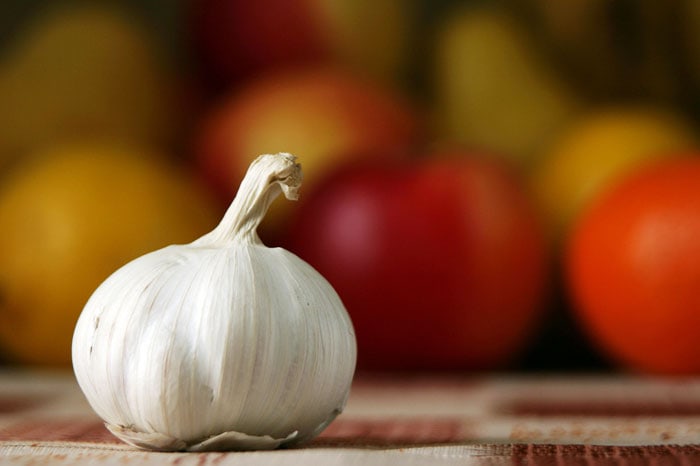
Written By: Sofia Layarda, MPH
Title: Master of Public Health
Alumni: University of California, Berkeley
Last Updated on:

Many of our favorite dishes would not taste quite the same without garlic. A member of the Allium family, which also includes leek and onion, garlic is being studied for its many health benefits.

Table of Contents
Garlic’s protection of our heart health is multi-pronged. Sulfurous compounds from garlic can be used in the production of hydrogen sulfide gas within the body, which appears to expand blood vessels and keep them relaxed, thereby helping manage blood pressure. In addition, garlic has been shown to lower cholesterol and triglyceride levels. To top it off, garlic’s collection of powerful phytonutrients (many of which are responsible for that addictive pungency) have anti-oxidative and anti-inflammatory effects on the blood vessels and blood cells. A particular compound called ajoene exhibits anti-clotting properties.
Population-based studies have found an inverse relationship between garlic intake and rates of cancer. The sulfurous compounds in garlic have been shown to inhibit the growth of cancer cells in culture, as well as induce apoptosis (cell death) and prevent blood vessel formation within cancer cells.
Although not present in large amounts, garlic also contains several nutrients known to have an anti-oxidative role within the body: Vitamin C, manganese, and selenium.
Researchers in India looked at the effect of adding raw or cooked garlic and onion to the cereal grains and pulses considered staples in the local cuisine, and found that both the raw and cooked forms of garlic and onion improve the bioavailability of iron and zinc. (The study was published in the Journal of Agricultural and Food Chemistry in 2010).
While still in its early stages, research is underway on garlic’s potential as an antibiotic in cases of infections not treatable by existing prescription antibiotics, as well as in the management of the H.pylori bacteria, which is linked to stomach ulcers.
While raw garlic has potent healthful properties, it is also the strongest in taste, so some find the pungency of its raw form too sharp to be enjoyable. Fortunately, garlic cooked using a quick-cooking method such as a simple sautee still retains a significant amount of bioactivity. When it comes to preparation method, crushing or chopping garlic activates the enzymes that lead to many of its healthful benefits, while boiling or microwaving whole garlic cloves will deactivate many of these enzymes.
Some studies have also shown that garlic is more effective in its whole-food form rather than as an extract (powdered or pill form), which is all the more reason to cook with garlic rather than simply take supplements.
When something as tasty as garlic actually has many health benefits, it is not a hard sell. Use garlic in your salads, soups, mains, and sides. Garlic breath can actually be good for you!
Alumni: University of California, Berkeley – Sofia believes in bringing back fun and pleasure into everyday eating. She loves cooking, and is constantly experimenting with ingredients, creating recipes and trying them out on family and friends. Her latest interest lies in finding realistic and practical ways of environmentally-friendly food/eating habits.
The Ultimate List: High Fiber Foods To Add to Your Diet (2023 Update)